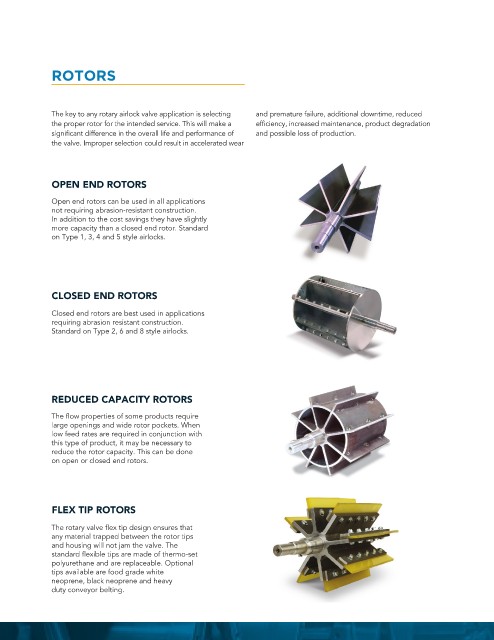Page 2211 - Flipbook_SolidDesignSoutheast2020
P. 2211
ROTORS
The key to any rotary airlock valve application is selecting and premature failure, additional downtime, reduced
the proper rotor for the intended service. This will make a efficiency, increased maintenance, product degradation
significant difference in the overall life and performance of and possible loss of production.
the valve. Improper selection could result in accelerated wear
OPEN END ROTORS
Open end rotors can be used in all applications
not requiring abrasion-resistant construction.
In addition to the cost savings they have slightly
more capacity than a closed end rotor. Standard
on Type 1, 3, 4 and 5 style airlocks.
CLOSED END ROTORS
Closed end rotors are best used in applications
requiring abrasion resistant construction.
Standard on Type 2, 6 and 8 style airlocks.
REDUCED CAPACITY ROTORS
The flow properties of some products require
large openings and wide rotor pockets. When
low feed rates are required in conjunction with
this type of product, it may be necessary to
reduce the rotor capacity. This can be done
on open or closed end rotors.
FLEX TIP ROTORS
The rotary valve flex tip design ensures that
any material trapped between the rotor tips
and housing will not jam the valve. The
standard flexible tips are made of thermo-set
polyurethane and are replaceable. Optional
tips available are food grade white
neoprene, black neoprene and heavy
duty conveyor belting.

